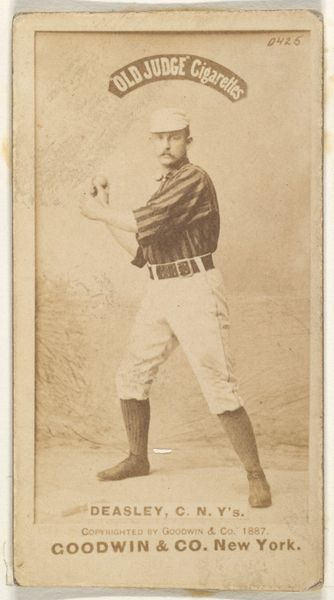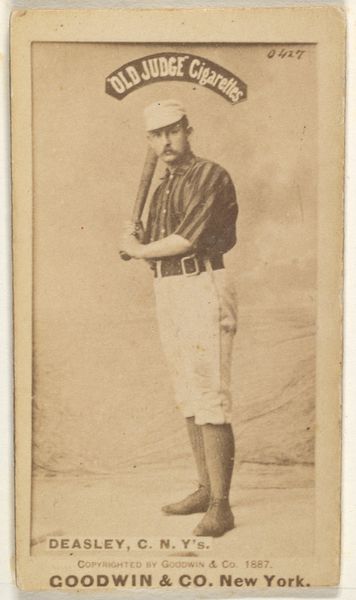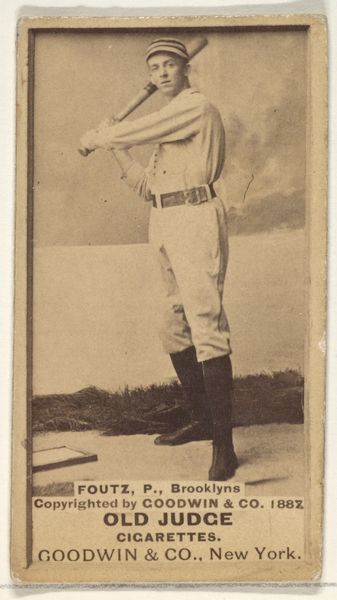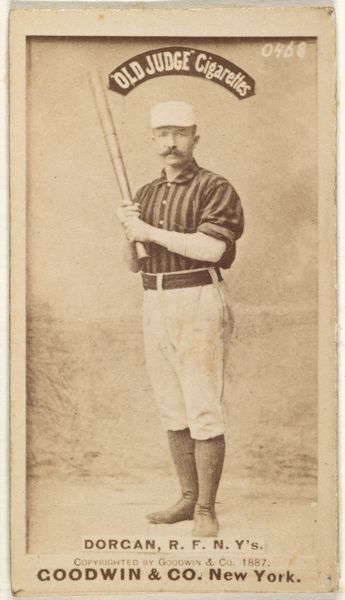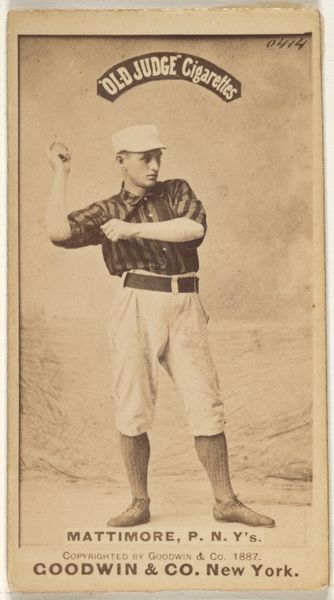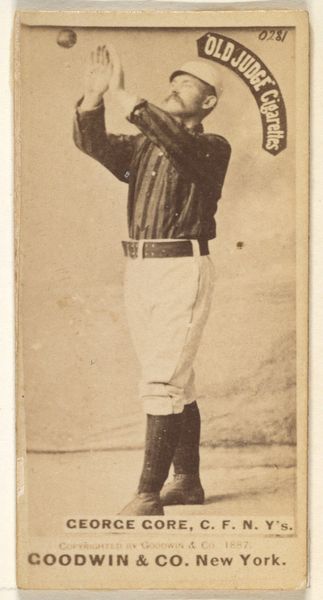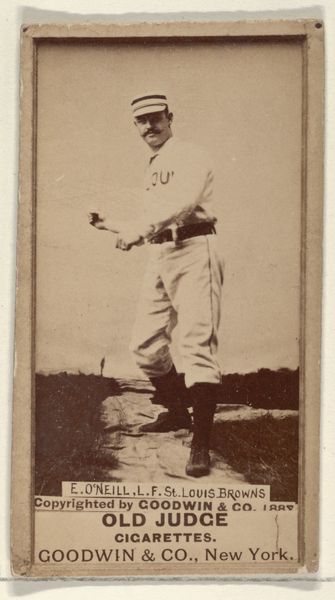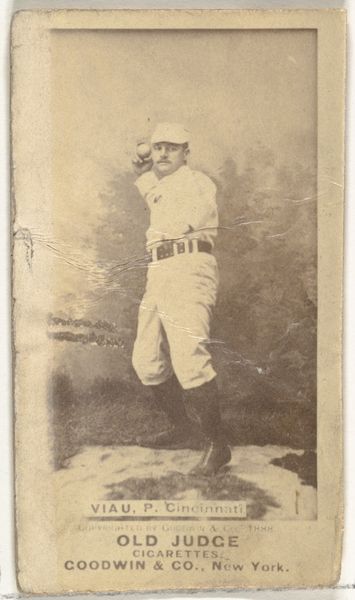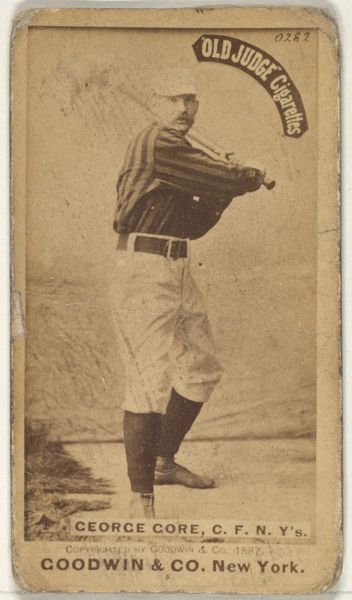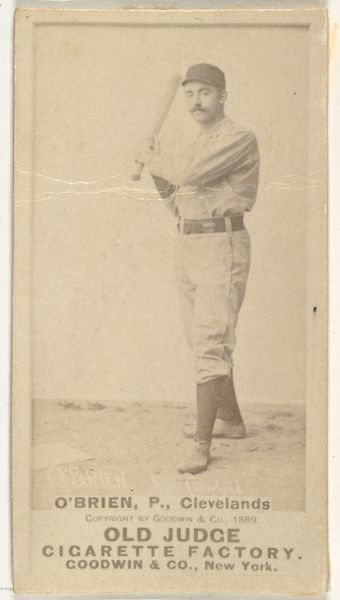
Thomas H. "Pat" Deasley, Catcher, New York, from the Old Judge series (N172) for Old Judge Cigarettes 1887
0:00
0:00
drawing, print, photography
#
portrait
#
drawing
# print
#
photography
#
history-painting
#
realism
Dimensions: sheet: 2 11/16 x 1 3/8 in. (6.9 x 3.5 cm)
Copyright: Public Domain
Curator: Before us, we have a piece titled "Thomas H. 'Pat' Deasley, Catcher, New York, from the Old Judge series (N172) for Old Judge Cigarettes," produced in 1887 by Goodwin & Company. It's currently held at the Metropolitan Museum of Art. Editor: Immediately, there's a subdued tonality at play here, a careful arrangement of light and shadow. I can't help but fixate on the vertical thrust implied in the subject’s gesture, contrasted with the near flatness of the field, yielding an uneasy tension. Curator: It’s fascinating how the artist uses the baseball player's pose, hands raised, ready to catch, not just as a depiction of athletic skill, but as a symbolic representation of readiness. The ball is not present here except in our minds; we supply it. Do you perceive an element of prefiguration here? Editor: Definitely, he’s an archetype of American athleticism. Also, that arched logo "Old Judge Cigarettes" functions like a halo, subtly sanctifying this rising subculture. How do the formal elements here – the lines of his uniform, the flatness of the ground – contribute to this symbolic reading? Curator: In many ways, this piece epitomizes late 19th-century photographic aesthetics. The restricted tonal palette – almost monochromatic save for the subtle gradients in the background – reinforces a particular kind of truth-telling common at the time. The subject's composition is stable and balanced; the formal integrity aligns with, and perhaps even creates, that era's view of morality and good form. Editor: The repetition of the rectangular frame, the catcher’s erect body, the 'Old Judge' banner and finally, his blocky mustache give an undeniable masculine stability; almost as if the work were constructed with these rigid geometrical parameters. It evokes ideas of steadfastness that are almost militaristic, even. Curator: The success here, for me, hinges on that intricate balance – the tensions that the shapes embody – but most interestingly, how this creates a larger discourse about sport as commodity, health, and what can arguably be identified as an aesthetic, early modern manifestation of cultural cohesion in American culture. Editor: Precisely. This little fragment transcends its subject and epoch and still radiates energy. Its ability to conjure associations is a reminder that cultural encoding may find a vessel in nearly any object.
Comments
No comments
Be the first to comment and join the conversation on the ultimate creative platform.
